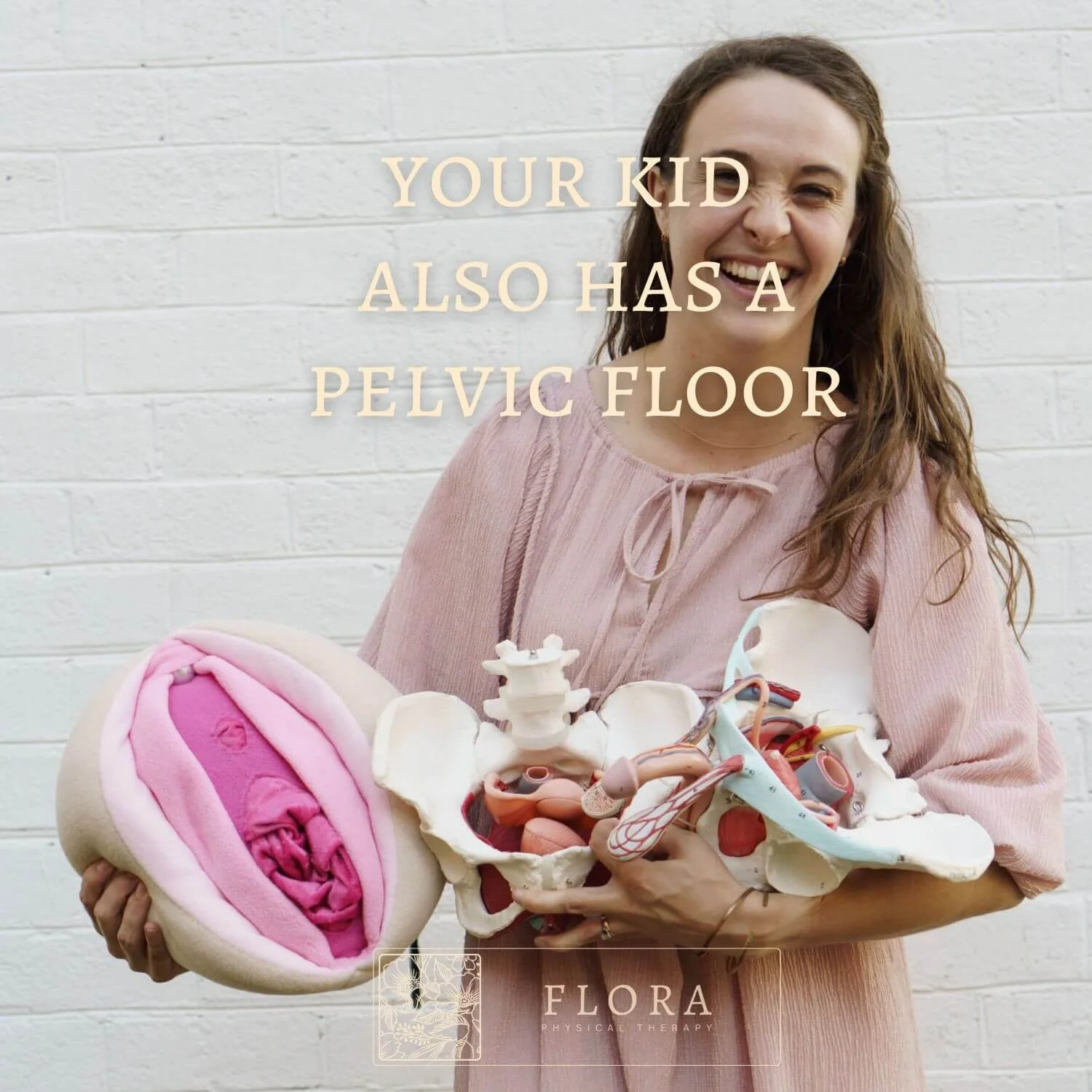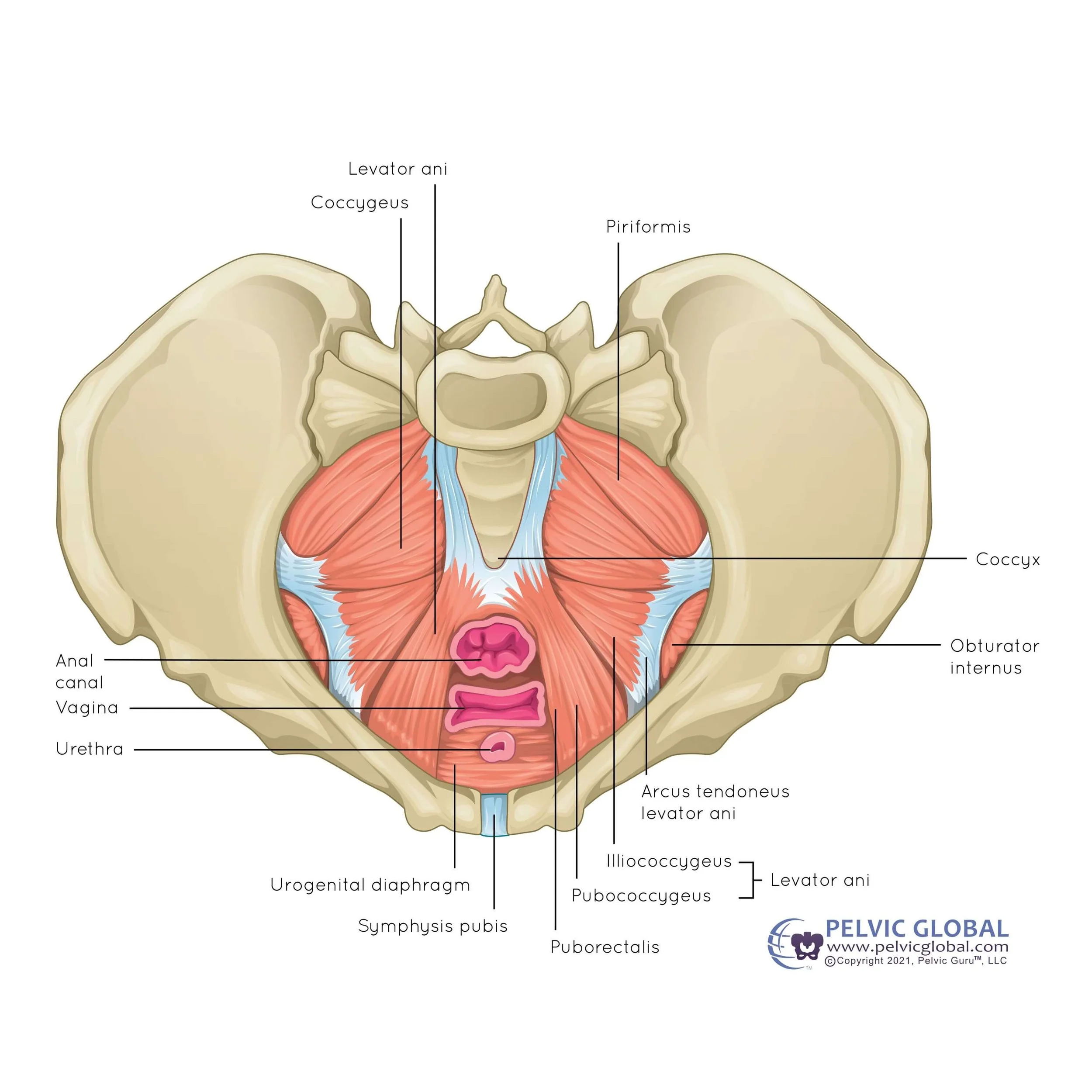your kid also has a pelvic floor
Do you have a kiddo struggling with poo or pee problems? Did you know that there’s pelvic floor physical therapy for that?!
pelvic floor anatomy in kids
Similar to how adults may have difficulty with constipation, leaking of poop, or leaking of urine children can encounter similar issues. These symptoms are frequently (but not always!) linked to dysfunction of the pelvic floor muscles, which are muscles at the base of the pelvis that wrap around the anal, urethral, and vaginal openings of the pelvis and help with functioning of pooping, peeing, and sexual activity or intimacy.
recommendations to help with your kiddo’s constipation from a pelvic floor physical therapist
As a Board-Certified Pelvic Floor Physical Therapist there are SO many things that I’m taking into consideration when working with children with bladder and bowel issues. Here are a few tips and tricks to help your kiddo that may be struggling with poop or pee dysfunction:
1. Water Intake:
Plain water helps to keep poop consistency soft and easy to pass to help prevent constipation and also helps to prevent irritation to the inner lining of the bladder to prevent issues with leaking of urine and urinary urgency and frequency.
Typically kiddos under the age of 8 years old should be drinking their age in 8 oz cups of water per day (so if your child is 2 years old they should be drinking 2 8 oz cups of water a day). Children that are 8 years old and older should be drinking 8 8 oz cups of water per day.
2. Fiber Intake:
Fiber does a few different things in terms of poop consistency. For children that are struggling with constipation and hard to pass poop it will help to soften the poop and make it easier to pass. For kiddos struggling with loose poop or leaking of stool it helps to bulk the poop consistency and makes it easier to hold on to which helps to prevent leaking of poop.
Typically you want to add 5-10 on to the age of your child in years old to give you the recommended amount of grams of fiber that they should be eating a day. For example, if your child is 2 years old they should be eating 7-12 grams of fiber per day (2+5 to 2+10).
Make sure that you gradually increase your childs fiber intake as it can cause abdominal bloating and discomfort when added rapidly or in large quantities. Also make sure that your child is staying consistent with their daily water intake as an increase in fiber without sufficient water intake can actually worsen or cause constipation.
3. Pooping Positioning:
If your kiddo is using a toilet you want to make sure that their feet are able to touch the ground and that their knees are above the level of the hips when positioned on the toilet. This allows the pelvic floor muscles wrapping around the anal opening and the rectum to lengthen and release allowing poop to exit the body more easily and without straining.
A good way to ensure this position is by placing a step stool (such as the kids Squatty Potty) under their feet.
4. Breathing Mechanics While Pooping:
You want to make sure that your kiddo isn’t straining while pooping as this can cause the pelvic floor muscles to contract making it more challenging to empty when going to the bathroom.
A good way to do this is by having your kiddo blow bubbles (yes, bubbles), blow a pinwheel, or “moo” like a cow while sitting on the toilet or during their toileting routine when pooping. This will help the anal opening to lengthen and release while exerting a small amount of pressure to allow the poop to come out of the body. And it makes pooping more fun which is important when creating a positive environment surrounding going to the bathroom which will help long-term with toileting.
Have questions or feeling on the fence about whether or not pelvic floor physical therapy is for you? If you’re looking for treatment for pediatric pelvic floor issues and you’re located in Durham, North Carolina I would love to work with you! Reach out to me here to tell me a little more about what is going on so we can chat more and get the process started. Live outside of the state of North Carolina? I also offer virtual appointment options to provide more accessible care to those seeking out pediatric pelvic floor physical therapy treatment.
Have a kiddo who is struggling with constipation or other pelvic floor conditions? Check out my website here to see what other conditions I treat as a pelvic floor physical therapist.
Dr. Brook Orvis (she/her) is a Board-Certified Women’s Health and Pelvic Floor Physical Therapist, Duke Residency-Trained in Women’s Health, and the owner of Flora Physical Therapy. As a momma to a spirited toddler, she understands the difficulty of being a parent while prioritizing self-care, including caring for your body and pelvic floor. She believes that pelvic floor therapy is for everyone and is passionate about providing accessible treatment options for birthing people, men, women, kids, and the LGBTQIA+ community so that they can take better care of themselves and receive equitable care. She loves educating and empowering clients to take charge of their body and health and to not accept leaking of urine, prolapse, pelvic pain, pain during sex, and core weakness as a normal part of being a human.




